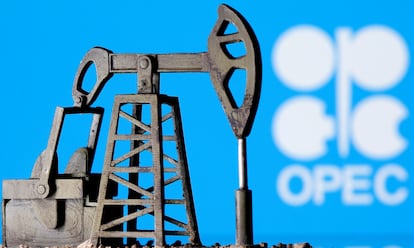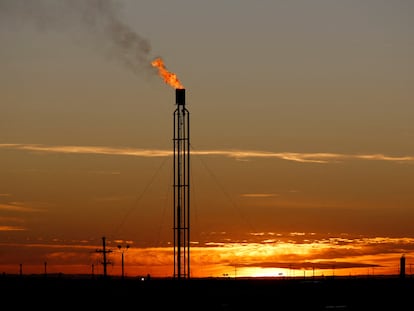OPEC cuts in oil production challenge central banks
Crude oil prices have risen by almost 20% since late 2023, driven by OPEC’s lower output and Ukrainian attacks on Russian oil facilities

The two biggest central banks — the European Central Bank (ECB) and the Federal Reserve — are set to lower interest rates in June after a few delays. However, the Organization of the Petroleum Exporting Countries (OPEC) is complicating matters with production cuts, driving oil prices higher than they should be given the current supply and demand. Recent Ukrainian drone attacks on Russian oil facilities have also affected the global oil market.
Oil plays a crucial role in general price indices (CPI), influencing central banks’ decisions on adjusting interest rates. Its impact extends throughout the price chain due to being a key energy input, and the West’s inability to influence those prices. Except for the United States, Canada and Norway, the world’s largest crude oil exporters are in the Middle East and Latin America, and belong to OPEC+, the expanded version of the oil cartel. Expensive oil affects all consuming nations — even the U.S. and China — with the Eurozone being especially sensitive to price fluctuations.

Despite recent corrections, attributed to a U.S. request for Ukraine to stop bombing Russian oil facilities to prevent further price escalation, the price of Brent Crude oil has risen nearly 20% in just over three months. While still below last September’s peak when a barrel of Brent approached $100, the most recent price surge marks a shift from the previous downward trend in energy prices. Although gas and electricity prices are pushing down on the CPI, fossil fuels are now worrying the ECB and the Fed. This comes at a crucial juncture as the two central banks near the last mile of their battle against inflation.
Oil price increases affect nearly all consumer goods. Drivers and users of public transportation, especially transportation unregulated fares like airplanes and long-distance buses, are feeling it the most. But the pain doesn’t stop there — higher fuel prices affects the cost of almost everything, particularly groceries, just as households were starting to feel some relief.
While oil is not the sole factor at play, U.S. price drops have recently plateaued. This has sparked debate among moderate and radical inflation hawks about trends and historical parallels with the 1970s, just as central banks prepare to make their first interest rate cuts in years.
Jorge León spent several years in the OPEC engine room and is now a vice president of the Rystad Energy consulting firm. He forecasts Brent prices to remain at “high levels” in the second half of 2024, “but it won’t go over $90 a barrel for a sustained period.”
León believes that the impact of oil prices on inflation will be limited. Despite recent increases, he notes that “the price of oil is not particularly high compared to past levels.” He also believes the current price is not high enough to prompt a change in central bank direction regarding interest rates. In other words, cuts in June are still likely. “For crude oil to significantly impact inflation and interest rate decisions,” said León, “its price would have to go over $100.″ That’s an unlikely scenario, at least for now.
Sign up for our weekly newsletter to get more English-language news coverage from EL PAÍS USA Edition
Tu suscripción se está usando en otro dispositivo
¿Quieres añadir otro usuario a tu suscripción?
Si continúas leyendo en este dispositivo, no se podrá leer en el otro.
FlechaTu suscripción se está usando en otro dispositivo y solo puedes acceder a EL PAÍS desde un dispositivo a la vez.
Si quieres compartir tu cuenta, cambia tu suscripción a la modalidad Premium, así podrás añadir otro usuario. Cada uno accederá con su propia cuenta de email, lo que os permitirá personalizar vuestra experiencia en EL PAÍS.
¿Tienes una suscripción de empresa? Accede aquí para contratar más cuentas.
En el caso de no saber quién está usando tu cuenta, te recomendamos cambiar tu contraseña aquí.
Si decides continuar compartiendo tu cuenta, este mensaje se mostrará en tu dispositivo y en el de la otra persona que está usando tu cuenta de forma indefinida, afectando a tu experiencia de lectura. Puedes consultar aquí los términos y condiciones de la suscripción digital.
More information
Archived In
Últimas noticias
Maduro pleads not guilty before the federal court in New York: ‘I am still the president of Venezuela’
A new test can detect Alzheimer’s from a finger prick
UN team enters Sudanese city of El Fasher after paramilitary massacre: ‘It’s like a ghost town’
A recipe for resistance: Indigenous peoples politicize their struggles from the kitchen
Most viewed
- Gilles Lipovetsky: ‘If you want to live better and fall in love, take Prozac, don’t look to philosophy’
- Alain Aspect, Nobel laureate in physics: ‘Einstein was so smart that he would have had to recognize quantum entanglement’
- Alvin Hellerstein, a 92-year-old judge appointed by Bill Clinton, to preside over Maduro’s trial in New York
- Why oil has been at the center of Venezuela-US conflicts for decades
- Maduro’s downfall puts China’s relationship with Venezuela to the test











































